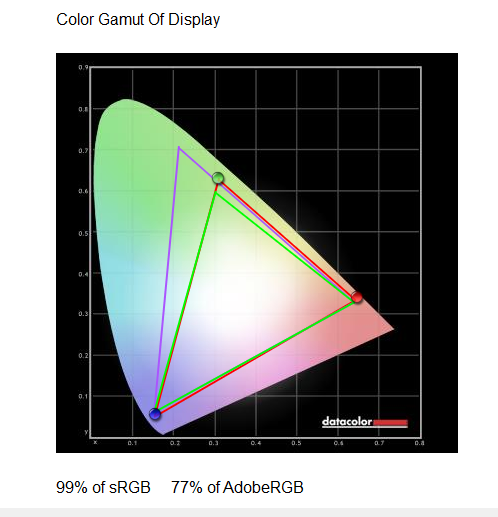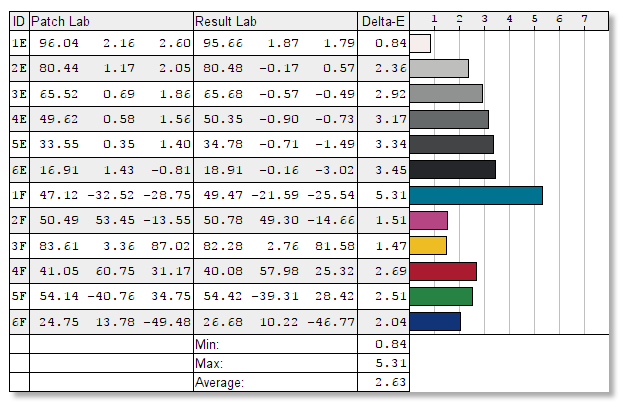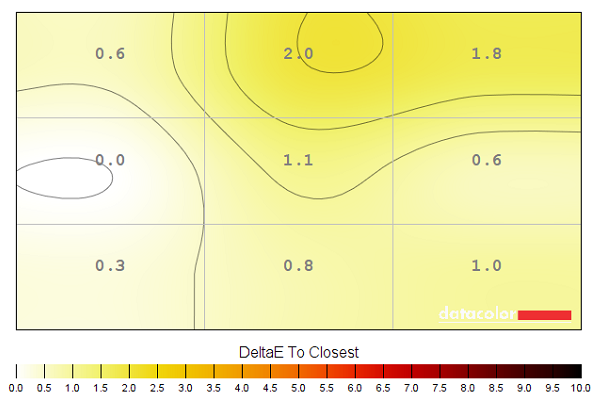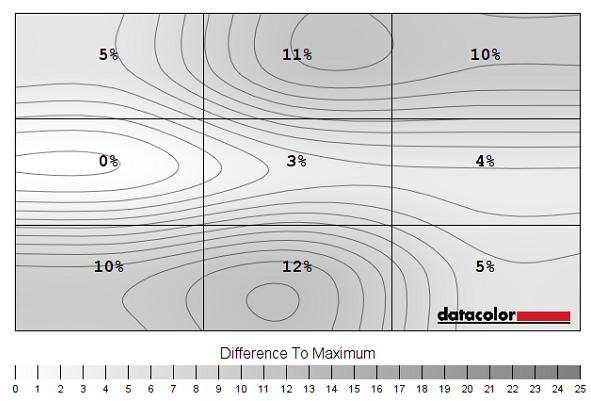Running the numbers
A monitor review based on descriptive visual analysis will always have the underlying problem of subjectivity; assessments of panel quality will vary from user to user depending on their normative expectations. To get around this we’re deploying Datacolor’s Spyder 4 Elite professional monitor analyser to return a quantitative assessment of display quality.
We also make use of the Leo Bodnar video signal input lag tester which allows us to test the combined input latency of a specific monitor at the 1080p resolution with 60Hz operation only (a limitation of the testing equipment).
These numerical results, we feel, add extra utility to our reviews allowing us to more accurately benchmark the following display characteristics:
- Colour gamut relative to sRGB and AdobeRGB industry standards
- Brightness levels and contrast ratios
- Colour uniformity
- Luminance uniformity
- Colour accuracy (Delta-E)
- Input latency
Gamut
We look for full saturation of the sRGB space and at least 75 per cent of the wider AdobeRGB gamut for a non-photographic monitor. AOC's Agon AG271QX achieves the baseline benchmark scores.
Colour accuracy
The Delta-E figure corresponds to how close the displayed colours match up with real life. A lower Delta-E is better, meaning closer reproduction, and any figure below 2 is considered very good.
We're testing differently from the past by looking at out-of-the-box performance rather than calibrated; the rationale being that most users won't have a colorimeter to hand. 2.63 is a little below average.
Colour uniformity
TN panels are infamous for only producing the best colours when looking at the screen head-on. That's pretty much the case here, too, as the colours become washed out much past 60°. What we can say, with some certainty, is that the colour uniformity is excellent from all corners. We took a while to view and evaluate how well the monitor displayed blocks of colours, and at the price point we have no concerns.
Luminance uniformity
The screen appears even to the naked eye yet the testing shows otherwise. We like to see single-digit variances and there's a little more than that in the corners. Having said that, viewing an all-black screen shows no clear backlight bleed or anything untoward.
Brightness and white point
Brightness is exactly where AOC reckons it should be. The screen looks best when set to a 50 per cent brightness, however. Contrast, meanwhile, is reasonable.
Input lag and power consumption
Running at 1080p, which is the limit of the input-lag tester, we recorded a figure of 9.6ms, or way better than the majority of screens. Part of the trick in ensuring low lag is an AOC technology called, unsurprisingly, Low Input Lag, where picture post-processing is disabled to ensure the fastest transition from mouse movement to on-screen action. We like the idea behind this feature yet reducing image quality probably isn't going to play well with most non-competitive gamers. There was no lag in fast-paced games, either, helped on by a super-high refresh rate.
Once calibrated, the screen uses 26W on a black background and 37W on a pure white, which is about 10 per cent higher than similar models.
Gaming and general usage
We used a Radeon R9 Fury X graphics card and used a number of settings that enabled us to alter average framerate from 50fps up to 120fps across a number of games. The premise behind such an approach was to see how well the FreeSync implementation worked.
And it works really well. Gaming is smooth and stutter-free across the wide framerate band and it lives up to expectations. Even when the graphics card momentarily drops to below 30Hz, which we consider the absolute lowest for adaptive-sync technology to actually show a meaningful improvement, low-framerate compensation kicks in and keeps the image smooth-ish.
Indeed, AOC's main aim for the QG271QX is for it to be as good a gaming monitor as possible. If you go down the AMD route for your gaming thrills and spills, it's about as good as it gets.














